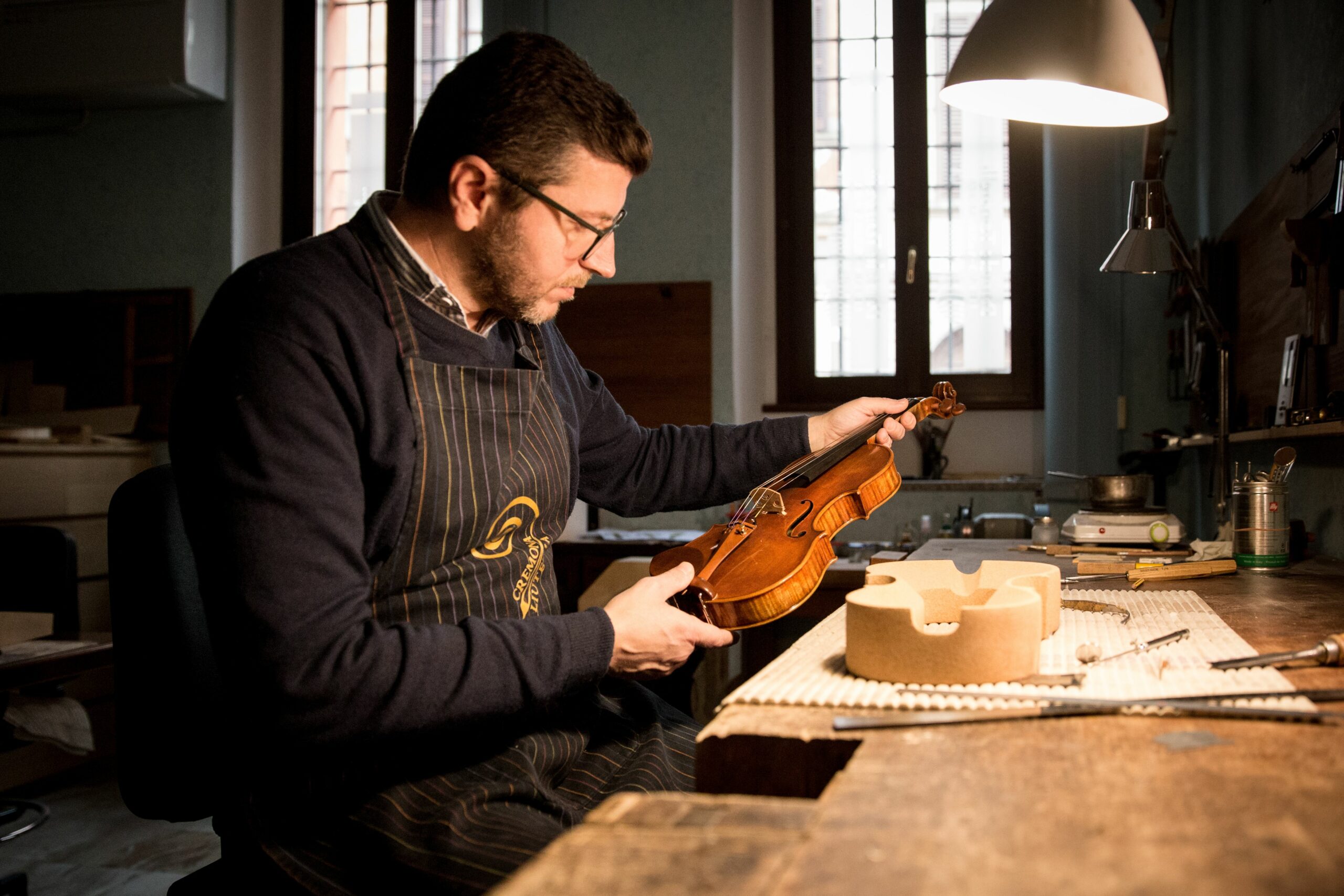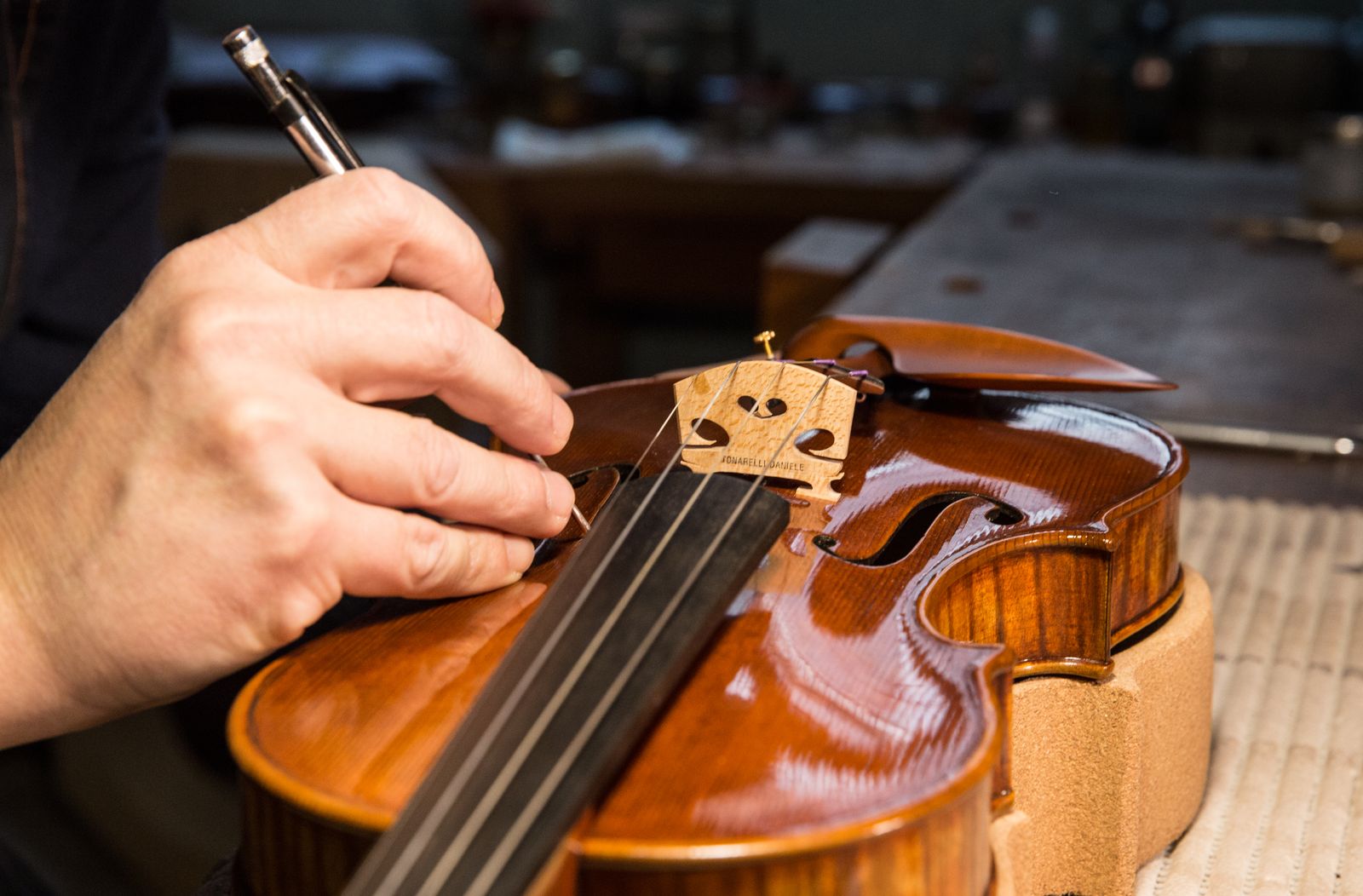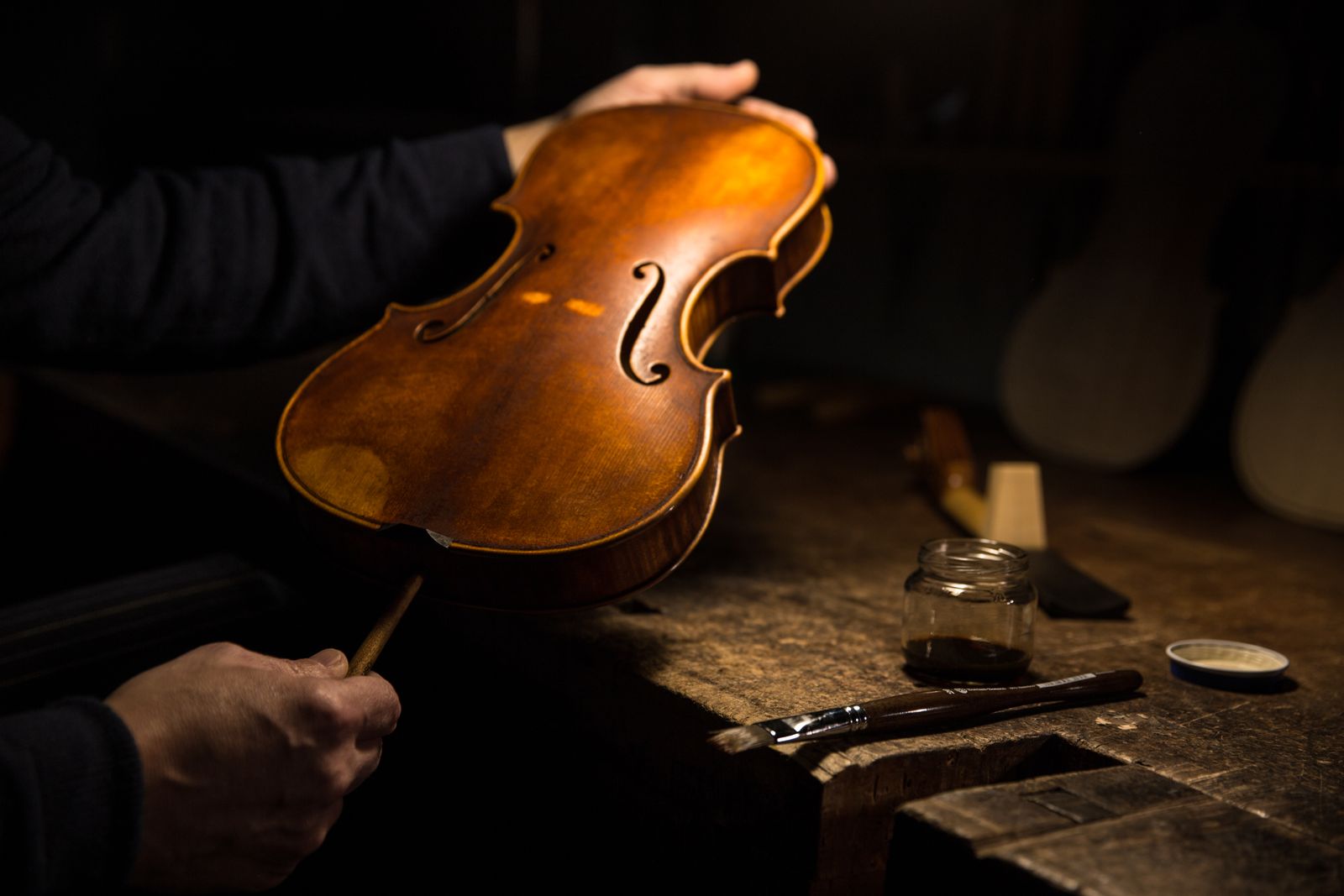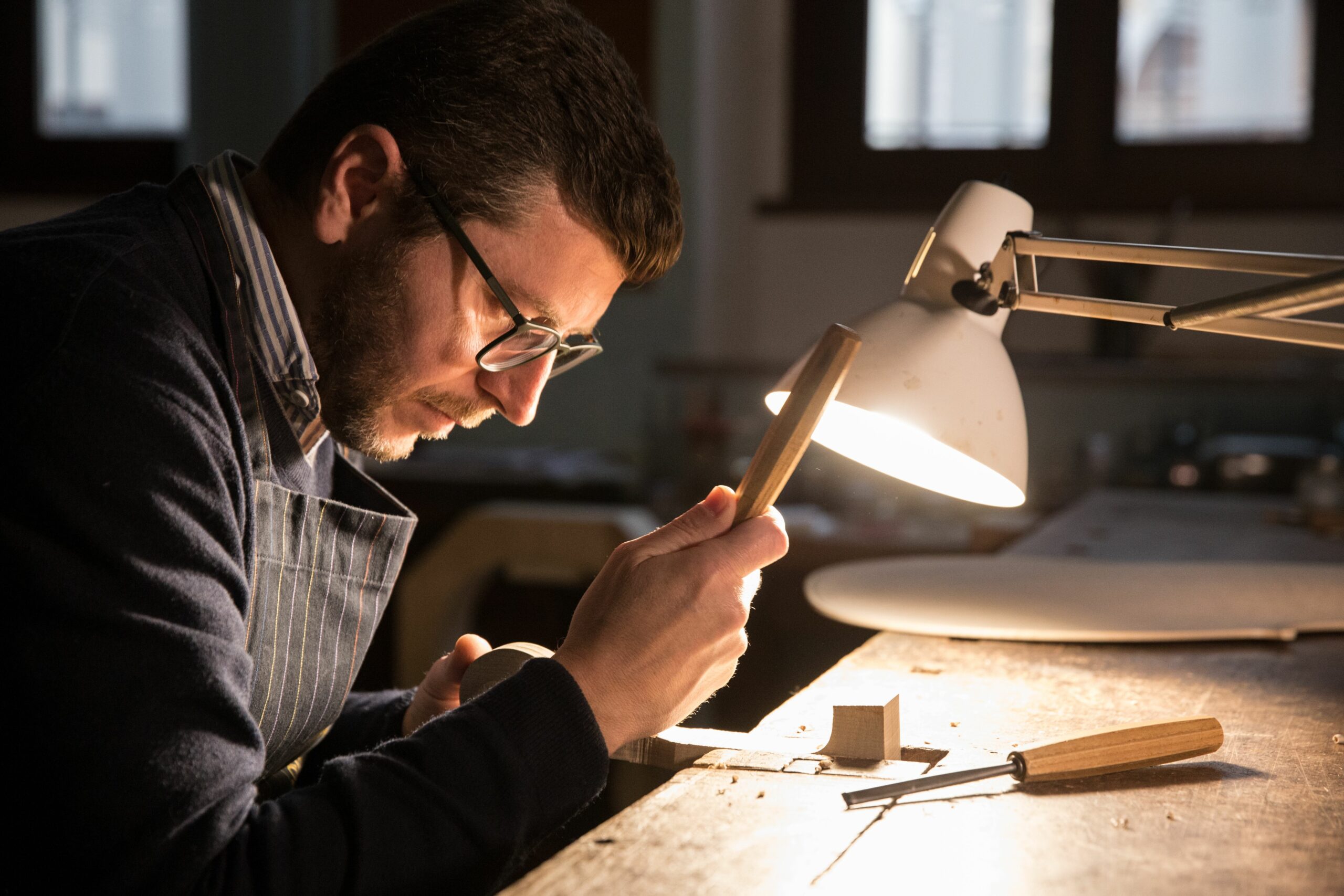The acoustics of any string instrument lies primarily in the material with which it is made. The classical Cremonese masters, since the time of the great Andrea Amati, deemed the best woods to be flamed Balkan maple for the back, ribs and neck, and red spruce from the Dolomites for the belly. The masters’ experience, handed down and refined over the centuries, has established the best types of wood to utilise. As I am a Cremonese violin maker, I continue this tradition.
The beauty and the elegance of the maple
In terms of aesthetics, maple is characterised by its typical flame, which may be more or less pronounced. This figured wood is very much sought-after for refined works because it is partly responsible for the beauty of the back, ribs and neck of the instrument, in this case of the violin and its family.
The wood is soft, making it easy for violin makers to carve and sculpt. Maple can be plain or figured with flames or bird’s eye. The tree can grow to great heights; 120 species exist, 6 of which are in Italy. However, the one preferred by luthiers comes from the Balkans due to its sound qualities. The wood I use on my instruments is aged for at least twelve years. That is why I write down the year of purchase on every piece of wood I acquire.
The great sound quality of Italian red spruce
Until now red spruce has had no rivals in terms of wood for high quality instruments. The vibrations of the belly in red spruce are ideal and are unmatched by other qualities of wood. This sonorous wood, chosen for the tops of violins, violas, cellos and other string instruments used to perform classical music, features unique qualities such as elasticity and resistance to continuous strain. Red spruce trees can be up to 40 metres high; for making violins, the red spruce of Val di Fiemme is preferred. Rumour has it that Stradivari used to wander on his own in the so-called Violin Forest – namely the Panaveggio Woods in Val di Fiemme – in search of the most suitable trees: the centuries-old red spruce with fine and perfectly concentric growth rings, and lacking in knots.





